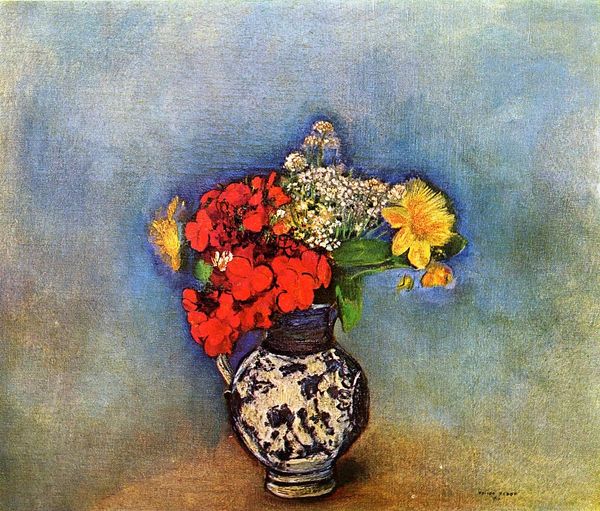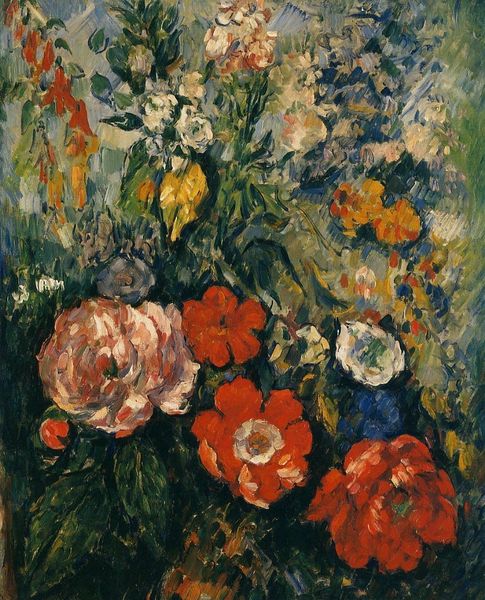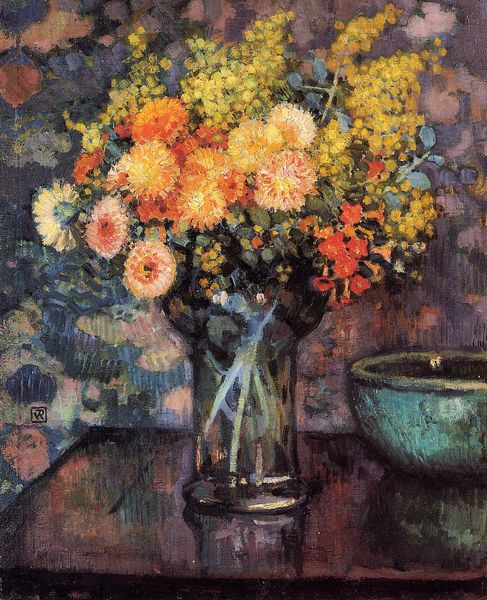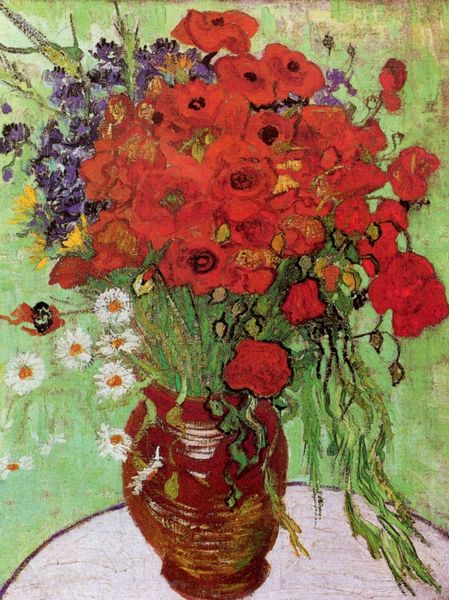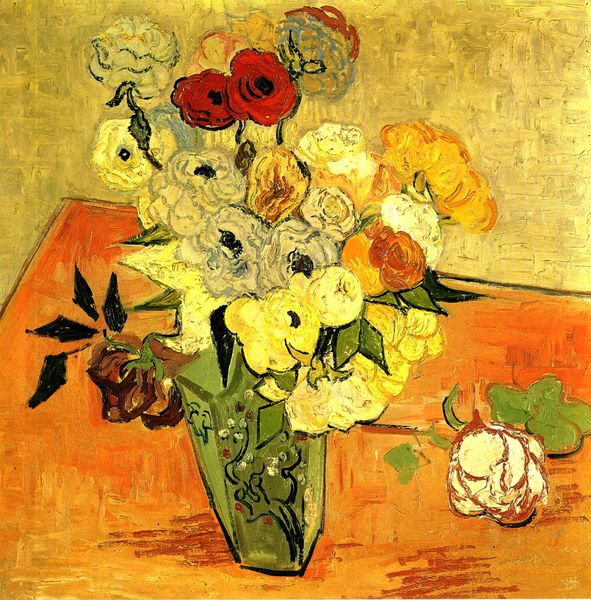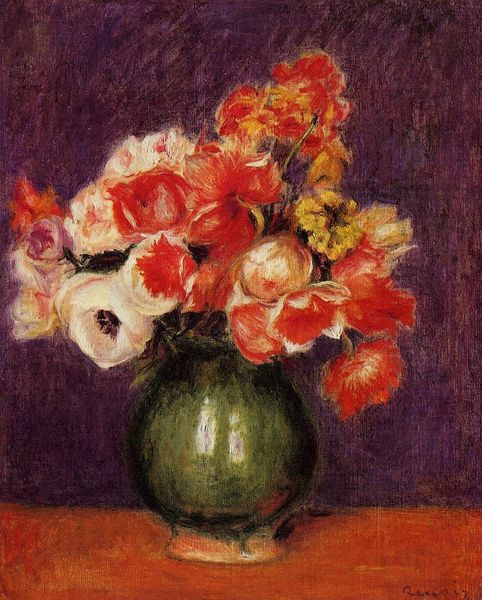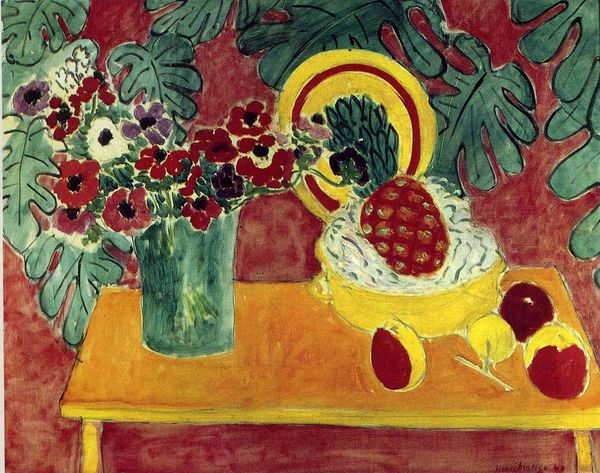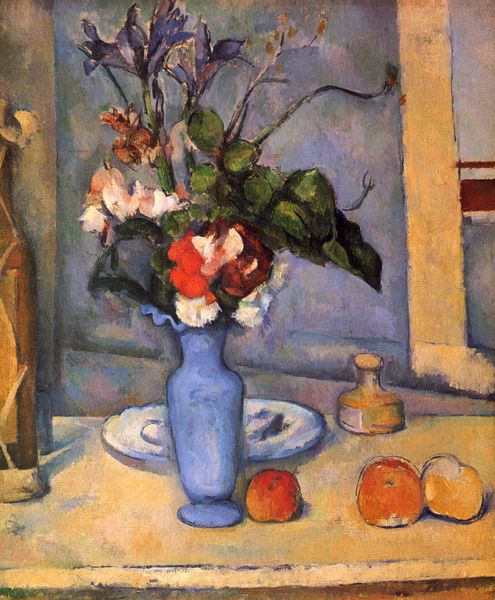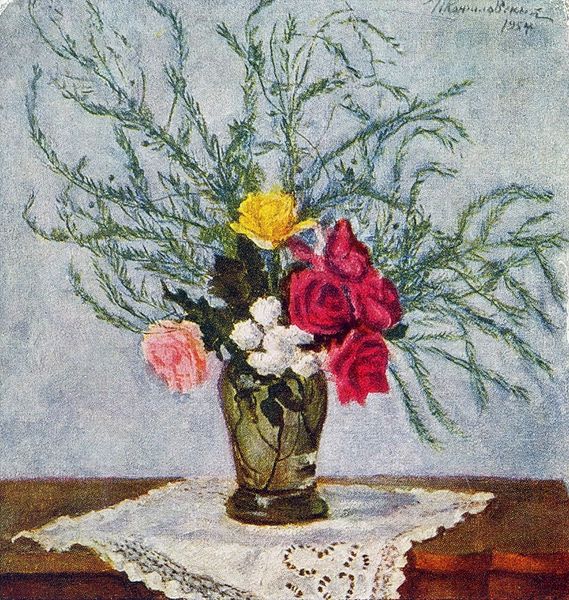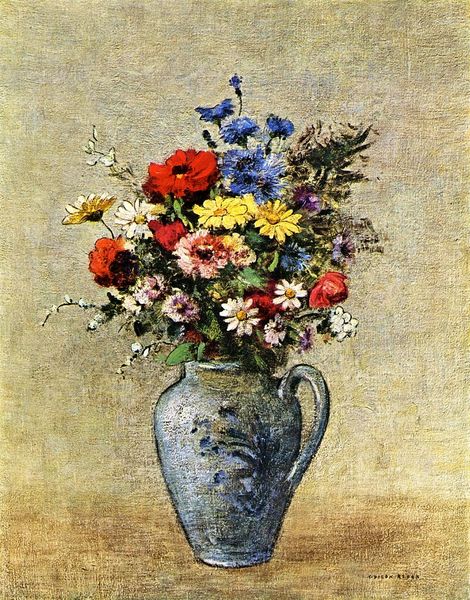
Dimensions: 41 x 27 cm
Copyright: Public domain
Editor: This is Paul Cézanne's "Still Life, Delft Vase with Flowers" from 1874, created with oil paint. It’s got this beautiful, almost intentionally awkward charm about it, and the vase is so striking. What can you tell me about how this kind of piece might have been received at the time? Curator: Cézanne’s still life needs to be considered against the academic painting of the Salon. Traditional hierarchies placed still life at the bottom, considered mere decorative skill. Cézanne elevates it, but through a critical lens. The skewed perspective and heavy impasto were a deliberate affront to polished, illusionistic painting, a direct challenge to established artistic norms upheld by institutions like the Academy. Editor: So, it was kind of a rebellious act to even paint it like this, let alone display it? Curator: Precisely. Think about the growing influence of impressionism. These artists were seeking autonomy from the official art world, forming their own exhibition spaces and dictating their own aesthetic values. Cézanne was pushing further – deconstructing form itself, questioning what constituted proper subject matter, and ultimately redefining beauty itself. It questioned the power structures defining artistic value. Did people understand this shift? Editor: Probably not immediately. It sounds like the kind of work that forces a re-evaluation. It definitely makes me rethink what a "successful" painting even means. Thanks! Curator: Indeed. Cézanne compels us to acknowledge that the ‘successful’ artwork, often by accepted societal standards, could very well enforce conservative ideals. Considering Cézanne's revolutionary paintings, maybe we need to check those standards!
Comments
No comments
Be the first to comment and join the conversation on the ultimate creative platform.
